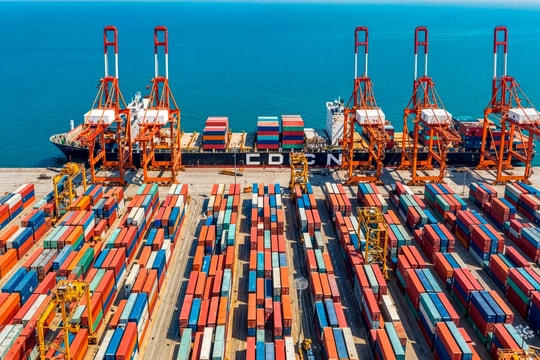Understanding Lean and Green
Traditional lean practices are widely used to cut costs, enhance production efficiency, and improve service quality. Lean focuses on eliminating non-value-added activities in the supply chain, which reduces inventory levels and shortens delivery times. However, this method does not always incorporate environmental factors.
.jpg)
Conversely, green initiatives primarily aim to minimize environmental impacts, such as reducing CO2 emissions and conserving natural resources. The goal of "green" is to safeguard ecosystems through the adoption of more sustainable and efficient production and supply chain practices.
“Integrating lean and green practices offers superior benefits within supply chains, especially under pressure from both governments and markets. Innovation goes beyond applying technology; it involves building a corporate culture committed to sustainability. Pioneering companies will not only meet market demands but also create long-term added value in the global industry.”
— Professor Mark Greeven at the Green Economy Conference 2024.
.jpg)
Similarities and Differences
While lean and green have different motivations and approaches, they can be integrated to create an optimal supply chain. Lean methods help reduce material and time waste, indirectly contributing to the reduction of environmental impacts. For example, cutting down on inventory not only lowers costs but also reduces the energy needed for storage.
Conversely, green initiatives can enhance lean practices by linking environmental protection efforts to more evident financial benefits. The combination of these two approaches helps businesses strike a balance between profitability and sustainability.
Integrating Lean and Green: An Effective Solution
To build a supply chain that is both lean and environmentally friendly, businesses need to establish a formal combined framework. This can include:
- Product design: Supply chain experts can contribute to developing products that not only minimize production costs but also limit environmental impact from the design phase.
- Use of sustainable materials: Applying recycled and renewable materials helps minimize natural resource extraction.
- Transportation improvements: Route optimization and the use of fuel-efficient or electric vehicles are effective ways to cut CO2 emissions in the supply chain.
- Circular supply chains: Adopting a closed-loop model that continuously reuses, recycles, and refurbishes products to eliminate waste.
Simultaneously implementing these measures strengthens the supply chain, reduces risk, and enhances both economic and environmental performance.
“The integration of lean and green in supply chain management is a strategic move for modern businesses. Global challenges such as climate change and economic crises have underscored the importance of sustainable solutions to not only maintain but elevate long-term competitiveness. This commitment must be demonstrated through specific initiatives and support from senior leadership, ensuring sustainability is not just an add-on but a core part of business strategy.” — Professor Alyson Meister at the 2024 Business Sustainability Development Conference.

Specific Benefits of Integration
Combining lean and green methods in the supply chain yields several notable benefits:
- Reduced operational costs: Minimizing waste helps cut unnecessary expenses, thereby improving profit margins.
- Enhanced brand image: Companies that adopt sustainable practices are highly regarded, attracting eco-conscious consumers.
- Increased competitiveness: Lean and green supply chains allow businesses to quickly adapt to market changes and respond faster to customer needs.
Implementing the Lean-Green Framework
To effectively deploy a combined lean and green framework, businesses should:
- Train and develop teams: Ensure employees understand and apply the principles of both approaches.
- Invest in technology: Use modern technologies like artificial intelligence to monitor and optimize processes.
- Continuously evaluate and improve: Track environmental and economic metrics to adjust strategies as needed.
Integrating lean and green in supply chain management is a strategic move that helps companies save costs and meet environmental standards. This combination is key to a sustainable future, where economic efficiency and social responsibility coexist.



.jpg)



.jpg)
.png)












